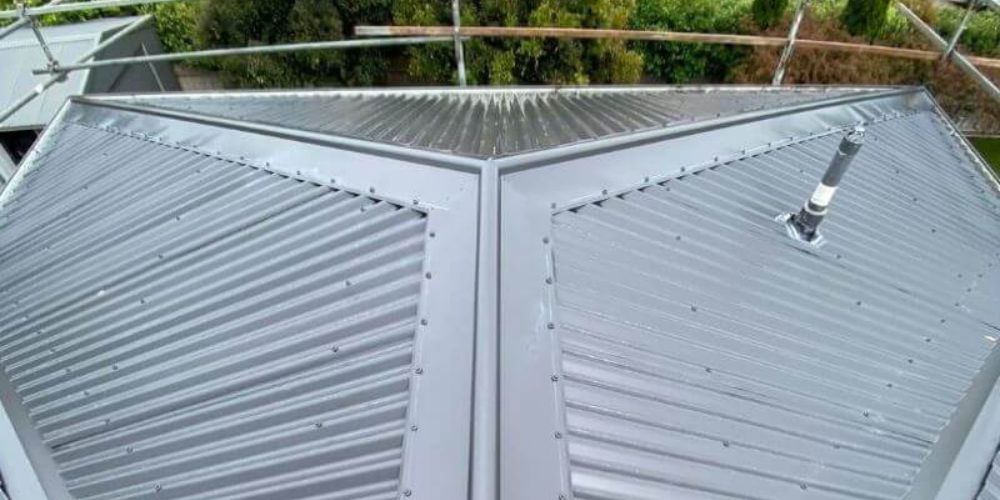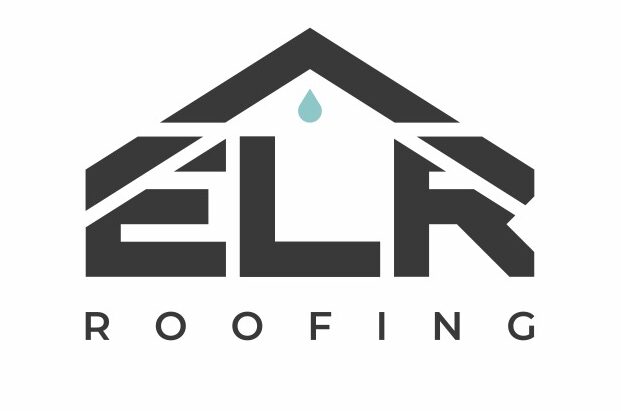Shelter from the elements, especially keeping water out, is one of a room’s most crucial roles in a house, which your roof excels at.
A properly watertight roof may prevent rot, mould, and structural damage. Flashing is one of the materials and architectural features included in a roof’s structure that metal roofers focuses on to ensure waterproofing and keep this damaging rainwater out.
Join us as we explore the idea of roof flashing, including its significance, composition, and other details.
What is a Roof Flashing
To keep water away from certain portions of your roof (walls, chimneys, and roof valleys), roofers apply roof flashing, a thin metal sheet. Every roof must have it since it is an essential roofing component. Natural vulnerabilities, such as joints and penetrable parts, exist where a roof meets a vertical structure. To accommodate structural features like chimneys, skylights, vents, and flues, a roof must have penetrable portions, which are holes or gaps in the surface. Gutter joins, walls next to roof connections, and door and window frames are a few places where joins may be found.
Today, steel is the metal material most frequently utilised for roof flashing. You get a neat appearance that works with most budgets. If you prefer a more sophisticated appearance, copper has a beautiful aesthetic and can last longer, but it will cost you more upfront.

Type of Roof Flashing
Depending on the task it must perform, flashing is shaped and, in some cases, soldered into various shapes.
Here are the most commonly used types of flashing:
Chimney Flashing
To prevent water and debris from entering the roof area and causing damage inside a building, chimney flashing acts as a skirt around a chimney where it meets the roof. When a chimney is erected through the roof from an interior fireplace, it exits the building through the roof cavity and into the outside world. A robust and long-lasting seal is made at the junction by installing chimney flashing around the chimney’s edge and up against the roofline. For the property to be safeguarded, chimney flashing must be constructed appropriately and in line with building and plumbing codes.
Continuous Flashing
A long, single piece of metal is used for continuous flashing, also known as apron flashing. It funnels water down to the roof shingles below. Continuous flashing finds it difficult to flex as your house grows and shrinks. Expansion joints are incorporated into the long lengths to stop continuous flashing from breaking and wrapping.
Skylight Flashing
A layer of security installed around the skylight is called skylight flashing. The initial line of defence against dangerous weather conditions like rain or snow might be considered this. The flashing, installed beneath the roof’s slates, tiles, or shingles, smoothly joins the window or skylight into the roof and creates a custom, tidy appearance.
Skylights frequently have a built-in flashing of their own. If not, their curbs are flashed with saddle flashing over the top, step flashing across the sides, and continuous flashing down the base.
Step flashing
A 90°-bent piece of metal called a step flashing is placed between the shingles and a sidewall, dormer, or chimney. Sending water back to the shingles below and off the roof stops water from entering between the shingles and damaging the roof structure. For roof-to-wall flashing, it is utilised. To ensure that the water flows away from the wall, layers of flashing will be installed alongside shingles.
Valley Flashing
The valleys where two roof planes overlap are shielded by valley flashing. Before the finishing material is attached to the roof, this W-shaped channel is positioned on top of the building felt.
Drip Edges
An angled piece of flashing set on top of a fascia board is known as a drip edge. A drip edge’s function is to assist divert water away from the fascia and towards the gutters. The gutters subsequently remove the water. You may place drip edges on your roof’s rake, eaves, and gable. Drip edges stop water from seeping beneath the roofing along rake and eave margins. Both along rakes and eaves, they are put over roofing felt.
Kickout Flashing
A kick-out or diverter flashing is an additional piece of metal or vinyl flashing that is installed to direct water away from a potential trouble spot, such as where a lower roof-edge gutter end touches a building sidewall or where a roof valley’s water flow volume is so high that it overshoots a gutter.
Rainwater may be removed from the structure by rain gutters when it is directed into them by kick-out flashing. Diverters, also known as kick-out flashing, can be constructed on-site using sheet metal. However, they might be undersized and have open seams that enable leakage. The flashing propels water away from the building, hence the name “kick out.” Rainwater is diverted away from cladding and into the gutter via flashing.
Important Roof Areas That Require Flashing
These consists of:
- Both the front and side walls (the roof surface that joins the wall)
- Valleys (low points where two roof slopes join)
- Ridges on the roof (bathroom vents, kitchen vents, and skylights)
- Rooftop eaves (eaves and rakes)
Roof flashings typically last 20 to 35 years, with an average lifespan of 25 years. Any material utilised to transition from one surface to another at a roof penetration or a change in the roofing plane is known as flashing. It is most likely at a flashing where a roof is leaking.
In addition to lead, terne metal, and copper, the material is frequently aluminium or galvanised steel. The term “flashing” refers to a material applied to the roof’s edge and is known as drip edge flashing. However, flashing is also utilised at roof penetrations like chimneys, skylights, and roof vents, where a roof meets an adjacent wall.
Common Damages and Problems on Your Roof Flashing
Age
Flashing has a finite lifespan. Roof flashing may bend as a result of seasonal temperature variations. Additionally, if a structure settles, flashing may flex and corrode. Any of these problems with old flashing will likely cause the materials it is intended to protect to fail.
Water Stain and Bubbles Forming in the Exterior
Water staining is another issue that might have an impact on the exterior of your property. When flashing is working correctly, water is directed into the gutter system. Instead, if rainfall flows down the external walls of your home, you will gradually start to see water stains on the siding. If the external of your house is painted, paint bubbling, which happens in the presence of moisture, will be visible.
Moulds Expanding
Mould will flourish everywhere moisture settles, both indoors and outside. When flashing fails, mould cannot be far behind. If the flashing has failed, you can see mould growing on your home’s siding, fascia boards, and roof tiles.
Developing Rust
Every roof flashing begins with corrosion and rust-preventative coating. But over time, corrosive airborne substances like salt will eventually damage roof flashing and result in rust. Rust is an indication that the flashing on your roof is ageing.
Missing and Loose Flashing Parts
Due to wind, rain, and sunshine exposure, roof flashing degrades with time. Furthermore, flashes might be removed or torn free by powerful storms. This is why the examination is crucial following severe storms. Your roof is exposed to the elements if the flashing is loose or missing.
Pests are encouraged to access your roof through missing or loose flashing and establish a home there. Pests can impact your roof’s capacity to insulate your home, in addition to water. Therefore, be careful to check your roof and look for any exposed patches where flashing formerly was.
Key Takeaway
Your roof comprises various parts that work together to make your house weatherproof. The flashing is one of your roof’s most crucial elements. Rainwater cannot enter the spaces between your roof’s components because of roof flashing.
We advise that you should have your roof examined for any necessary repair at least once a year. It’s a terrific opportunity to pay more attention to your roof flashing while that inspection goes on. Do not attempt to repair damaged roof flashing on your own. Qualified specialists best carry out repairs to roof flashing.
